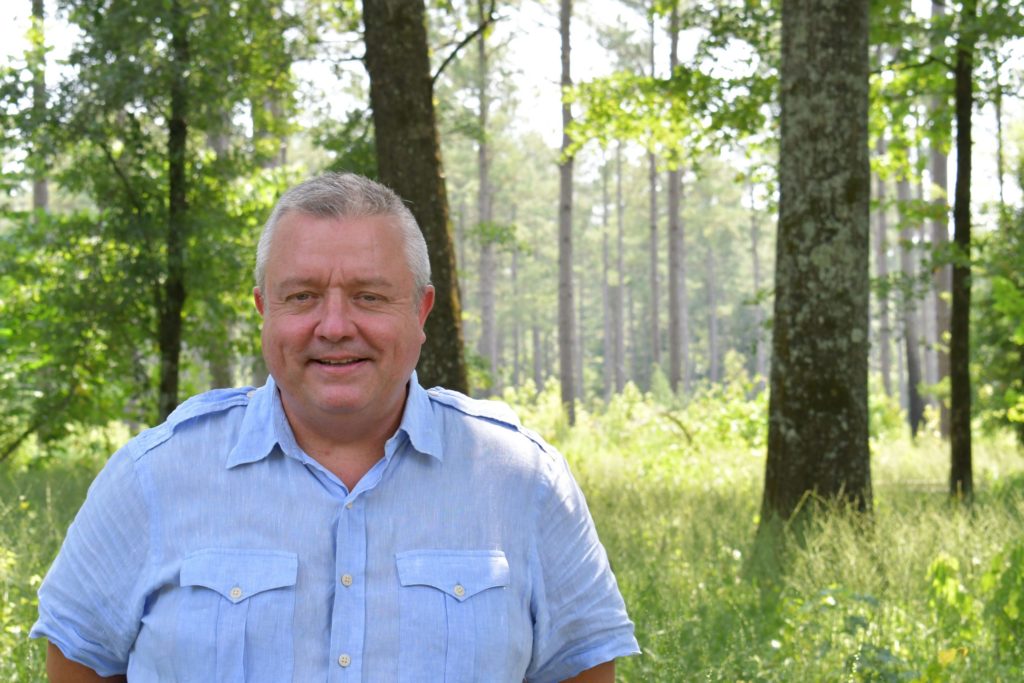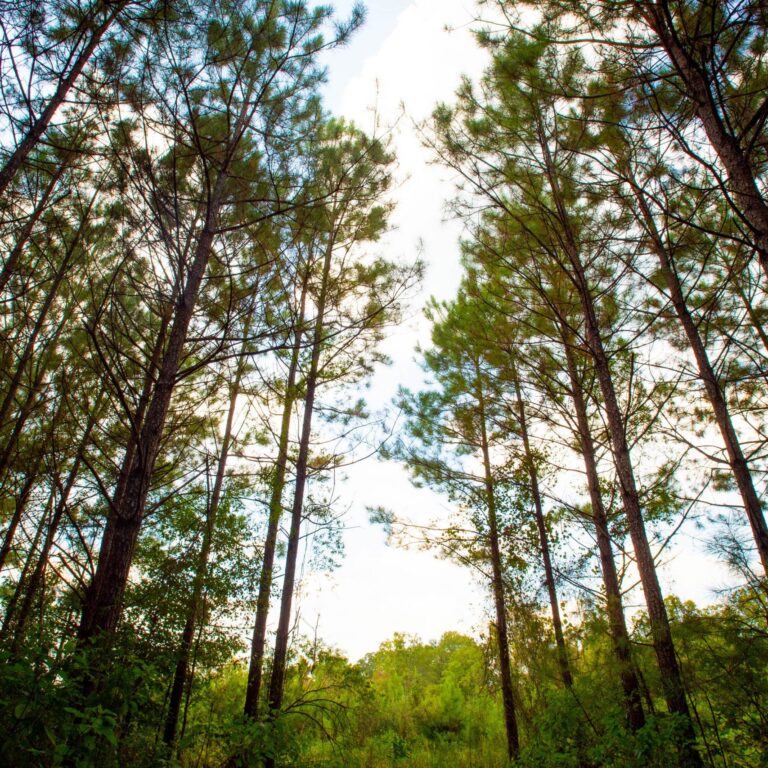For the first time in 40 years, Miles Goggans and his brother-in-law heard the quail calling through the pines on a recent holiday at his family forest in southeastern Arkansas.
“It was exciting to hear – I hadn’t heard quail on our land since I was a kid back in the 1970s,”
said Goggans, a sixth-generation landowner in the US southeast – heartland of the American forestry industry.
“They all disappeared after the big drought in the 1980s when the land was in cotton. But now they’re back – hearing the quail really demonstrates the positive effect that actively managing the forests can have on an area in a relatively short period of time,” he added.

Miles Goggans, a sixth-generation landowner in the US southeast. Photo credit: Tabitha Holloway at the Arkansas Department of Agriculture, Forestry Division
For the past three years, Goggans has participated in the Morehouse Family Forest Initiative (MFFI) – a conservation program set up in 2017 through a partnership with Drax Biomass and the American Forest Foundation.
The project encourages sustainable management of the forests surrounding Drax’s Morehouse Bioenergy pellet plant by connecting landowners with natural resource professionals who can help them achieve their objectives for their forest.
For family forest owners – who own around 80 percent of the forests in the US south – these goals typically include improving the wildlife habitat and recreational value of their property for activities such as hunting, while also ensuring the growth of high-value sawtimber for long-term returns.
Harvesting the small, misshapen and diseased trees in a process known as thinning is important to healthy forests because it ensures there is enough space and light to help the stronger, healthier trees to grow better, as these produce the high-value sawtimber needed for construction and furniture.
Thinning also has environmental benefits – improving the habitat for many wildlife and plant species endemic to the southern US, such as the quail on Goggans’s land.
“Measures like thinning out the trees and prescribed burning help open up the forest, which encourages new growth of plants and wildflowers as well as the insects and birds that depend on them,”
said Austin Klais, wildlife biologist from Pheasants Forever and Quail Forever, which works with landowners like Goggans through the MFFI.
“Quail is one of a number of species where we’ve seen a drastic decline in recent decades – at least partially due to a lack of active forest management. Seeing the return of birds such as quail is an indicator of a forest landscape that is healthy and biodiverse,” Klais said.
For Goggans, managing the forest to enhance wildlife habitat was a primary objective. For Dr. Glen Melton, another beneficiary of MFFI’s program, it’s also about the future.
“Yes – we are cutting trees, but we are also growing more. Actively managing the forests provides economic and environmental benefits – it results in better quality trees, more wildlife and healthier forests,” he said.
Melton, who is from Louisiana, made his first foray into forestry ownership with the 20 acres he inherited from his uncle – alongside a 1965 Ford pickup truck – when he was a young student at veterinary college.
“At the time I was more excited about the truck than the land, but over time I’ve realised that the 20 acres of land was by far the most valuable gift I could ever receive. I see my role here as one of stewardship – my legacy is to be able to leave this land in better shape than it was when I first found it,” said Melton.
ENDS
Media contacts
Selina Williams
Media Manager
E: [email protected]
Editor’s Notes
- The MFFI project with Drax works in the Northeast Louisiana parishes of Morehouse, Ouachita, Union and Winn, and the Southeast Arkansas counties of Ashley, Bradley, Drew and Lincoln.
- MFFI is part of American Forest Foundation’s larger Southern Woods for At-Risk Wildlife Partnership with the National Fish and Wildlife Foundation, which helps southern family forest owners protest at-risk wildlife while encouraging sustainable wood production.
- MFFI encourages sustainable forest management through certification in the American Tree Farm System – an internationally recognized certification program designed for family and small forest owners administered by the non-profit American Forest Foundation.
- This project is one of a number of initiatives of Drax’s to engage with local stakeholders on sustainable sourcing and forest management practices.
- The bioenergy market can play an important role providing an outlet for small, misshapen and diseased trees that need to be removed from forests to help the remaining trees grow better.
- The income from thinnings can help pay for some of the investments and annual costs landowners lay out in planting, growing and maintaining forests, providing an additional incentive to keep forests as forests.
- A report by Forest2Market shows that a healthy forest products market supports keeping forests as forests, increasing growth and carbon storage, as it provides a financial incentive to landowners to keep planting trees instead of turning the land over to pasture or urbanization.
About Drax
Drax Group’s purpose is to enable a zero carbon, lower cost energy future and in 2019 announced a world-leading ambition to be carbon negative by 2030, using Bioenergy with Carbon Capture and Storage (BECCS) technology.
Its 3,400 employees operate across three principal areas of activity – electricity generation, electricity sales to business customers and compressed wood pellet production and supply to third parties.
Power generation:
Drax owns and operates a portfolio of renewable electricity generation assets in England and Scotland. The assets include the UK’s largest power station, based at Selby, North Yorkshire, which supplies five percent of the country’s electricity needs.
Having converted Drax Power Station to use sustainable biomass instead of coal it has become the UK’s biggest renewable power generator and the largest decarbonisation project in Europe. It is also where Drax is piloting the groundbreaking negative emissions technology BECCS within its CCUS (Carbon Capture Utilisation and Storage) Incubation Area.
Its pumped storage, hydro and energy from waste assets in Scotland include Cruachan Power Station – a flexible pumped storage facility within the hollowed-out mountain Ben Cruachan.
Pellet production and supply:
Drax owns and has interests in 17 pellet mills in the US South and Western Canada which have the capacity to manufacture 4.9 million tonnes of compressed wood pellets (biomass) a year. The pellets are produced using materials sourced from sustainably managed working forests and are supplied to third party customers in Europe and Asia for the generation of renewable power.
Drax’s pellet mills supply around 30% of the biomass used at its own power station in North Yorkshire, England to generate flexible, renewable power for the UK’s homes and businesses.
Customers:
Through its two B2B energy supply brands, Haven Power and Opus Energy, Drax supplies energy to 250,000 businesses across Britain.
For more information visit www.drax.com









